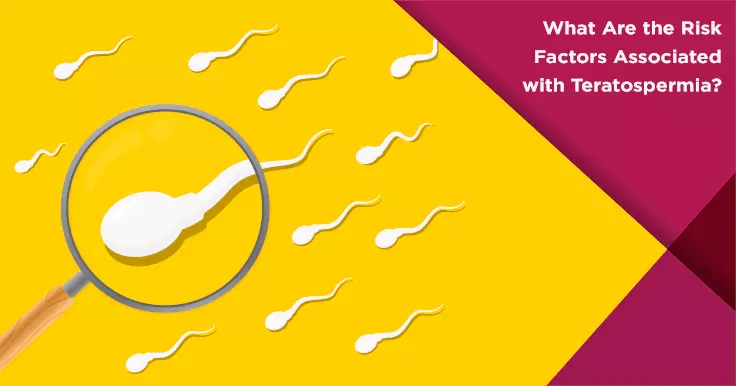Teratospermia Risk Factors: Causes of Abnormal Sperm Shape

Teratospermia is a condition where the number of abnormally shaped sperms cells is higher than normal. Teratospermia will require treatment and cure as it can lead to infertility. The abnormal sperms will be weak and will not be able to penetrate the egg and fertilise it. Depending on the percentage of abnormal sperms, teratospermia can be classified as mild, moderate or severe.
The Risks of Teratorspermia
The primary risk caused by this disease is the lack of healthy sperm which is characterized by an oval head, smooth overhead, and an overall proportion. Morphologically abnormal sperm can prevent fertilisation and hence leads to infertility. However, with the right treatment and care, this risk can be eliminated.
An advanced form of this issue is due to a substantial genetic damage which could be passed to his offspring. The abnormal sperm is often functionally deficient and could possess an altered cytoarchitecture. These issues in the cell can lead to modified sperm motility and reduced ribosomal activity which impair the protein synthesis as well. However, if pregnancy is achieved through assisted procedures, the embryo can be checked for anomalies
Cause and Treatment
To confirm the condition, laboratory tests of the semen are integral. This is to ensure the best possible treatment can be achieved for improvement of sperm parameters. Even though abnormal morphology in sperms cannot be eradicated, men with teratospermia can still have children with the help of advanced assisted reproductive technology. Procedures such as ICSI, IVF, and artificial insemination involve selection of a healthy sperm to fuse with an egg in the laboratory to form an embryo. The added advantage of this procedure is that any chances of anomalies or abnormalities can be tested for and the best embryo can be chosen.
 Infertility Counselling
Infertility Counselling Female Infertility Treatment
Female Infertility Treatment Andrology Treatment
Andrology Treatment Fertility Enhancing Surgeries - Female
Fertility Enhancing Surgeries - Female Fertility Enhancing Surgeries - Male
Fertility Enhancing Surgeries - Male Endoscopy Treatment
Endoscopy Treatment IUI Treatment
IUI Treatment IVF Treatment
IVF Treatment ICSI Treatment
ICSI Treatment Advanced IVF Solutions
Advanced IVF Solutions Embryology
Embryology Vitrification Egg, Embryo, Sperm Freezing
Vitrification Egg, Embryo, Sperm Freezing Preimplantation Genetic Testing (PGT)
Preimplantation Genetic Testing (PGT) Donation Program Embryo / Egg / Sperm
Donation Program Embryo / Egg / Sperm Self-cycleTM IVF
Self-cycleTM IVF

 Self-cycleTM IVF
Self-cycleTM IVF










